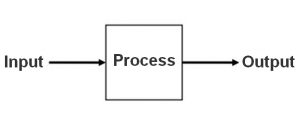New part of Nasir’s tutorial on Control Systems. You too can send us your articles, debates, experiments or tutorials.
Introduction
In our earlier articles we discussed about control systems. The system, in which, we arrange and combine constituents in such a way that our desired output is obtained.
Also, the system is controlled so that the stability of system in not disturbed in any span of time. It depends upon two factors:
- Desired output
- Stability
We analyze the features and functioning of every measurement system to know the working of system. There are two types of analysis in control systems:
- Time Domain Analysis
- Frequency Domain Analysis
Time Domain Analysis
In this article we will concentrate on time domain analysis. Time domain gives the view that how the state of dynamic system changes with respect to time when specific input is given. It gives you the manner of signal over time characteristics of a measuring signal.
Models which we have consist of differential equations so some integration is being done to determine time response. For simple linear system, analysis is being done easily by analytical solutions. However, for nonlinear systems or those which have complicated inputs, their integration is carried out numerically or by using MATLAB.
In time domain analysis, the time response of a linear dynamic system to an input is denoted as time’s function c(t). We can calculate the time response if the input and model of system is known.
The time response of linear system is the addition of transient response which depend on preliminary conditions and the steady-state response which is based on input of system.
-
- Transient Response
The element of the system that vanishes with time is called Transient response. It is the response of the system from rest or equilibrium to steady state. It is denoted by (t).
-
- Steady-State Response
It is the element of system response that is achieved when the time approaches to infinity. The response of the system after transient response is basically called steady state response. It is denoted by (t).
Transient response doesn’t depend upon input of systems therefore can be analyzed using step input. Steady state depends upon input and dynamics of system and can be determined using different test signals by final value theorem.
The equation of time response will be:
Stability in Time Domain Analysis
Stability in control system is said to be achieved if the output ultimately comes back to the state of equilibrium, when system is processed to an initial state. There are two terminologies in stability:
- Crucially Stable: In this case, the oscillation of output of system continues without end.
- Unstable: In this case, the output of system increases to a particular point.
Steady State Error
It indicates that the error between desired and actual output. It shows that at steady state the output is not corresponding with the input.
Conclusion
We have two ways to analyze working of any control system that are time domain analysis and frequency domain analysis. Both are two different principles to study functioning of any system.
In this article we thoroughly discussed time domain analysis of control systems. How it works, Transient and steady-state response and the stability in time domain. The next tutorial will focus on Typical Test Signals in Time Domain Analysis. The next part of tutorials will be more informative for you so stay connected.
Nasir.

Thanks for a good article!